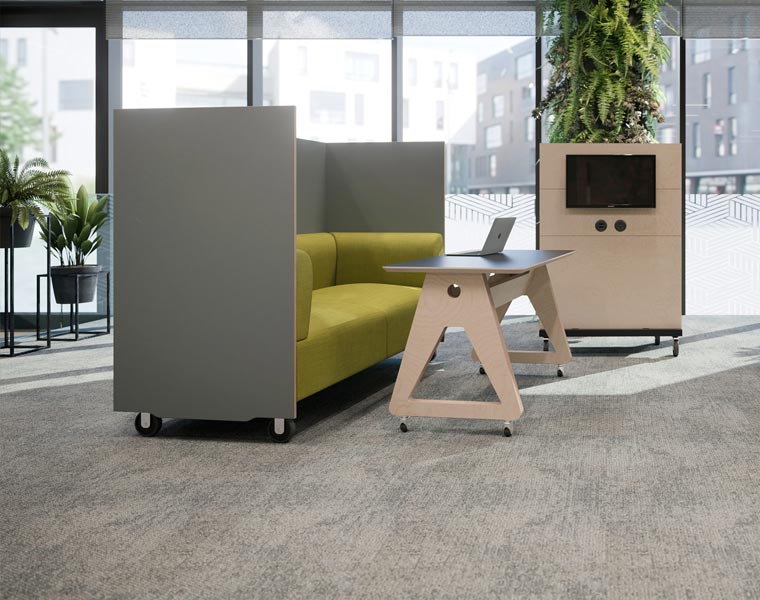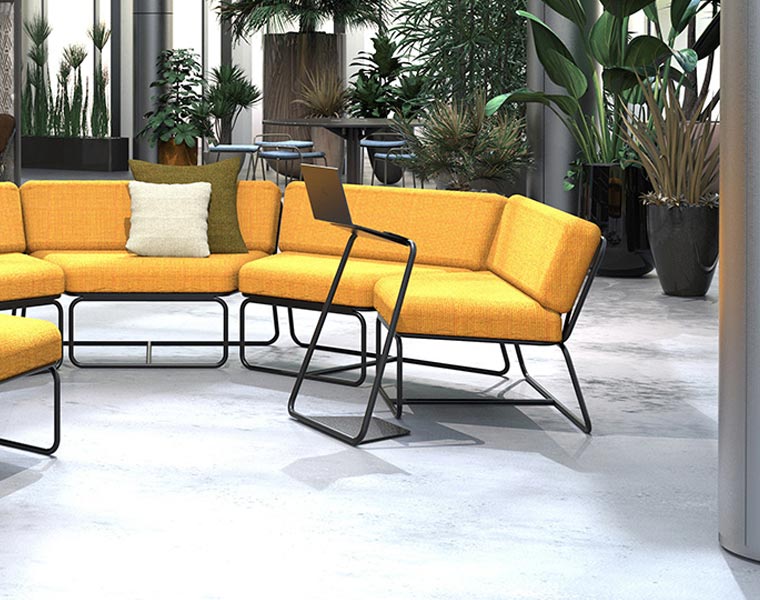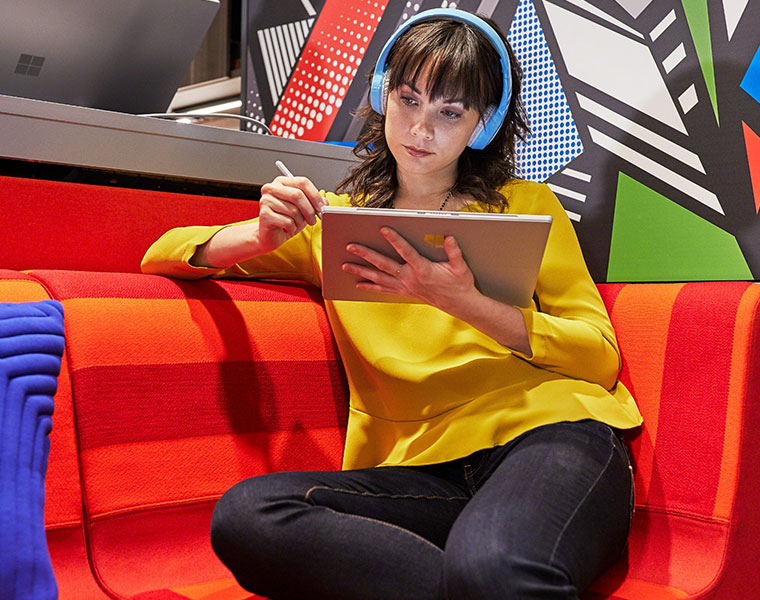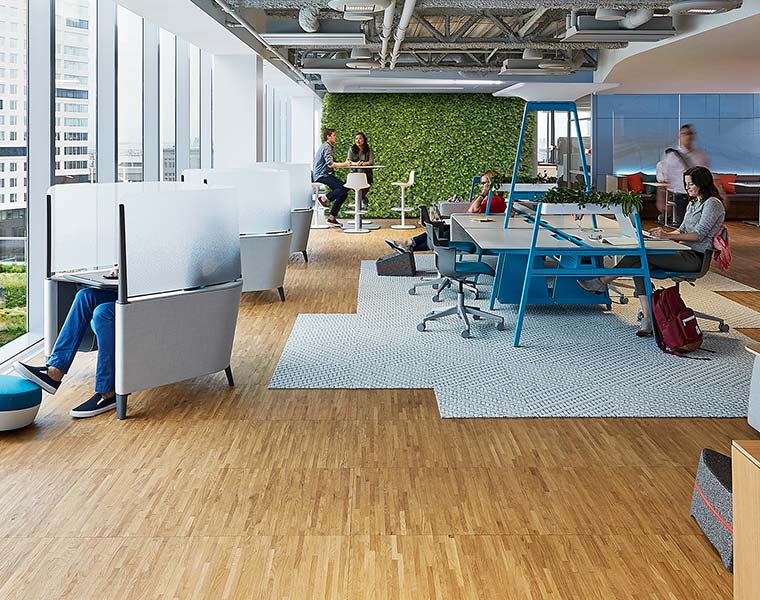As you might remember from our history of the office chair blog post a while back, chairs on castor wheels are an established concept that have been round for an extremely long time. However, it has only really been in recent years that people have started to widely recognise the possibilities opened up by other wheel-mounted furniture products such as desks, personal storage, credenzas, screens and coffee tables.
In this blog post, we explore the reasons why furniture on wheels might be a great idea for your workspace, as well as offering our expert advice on the ways you can invite these benefits into your working environment.
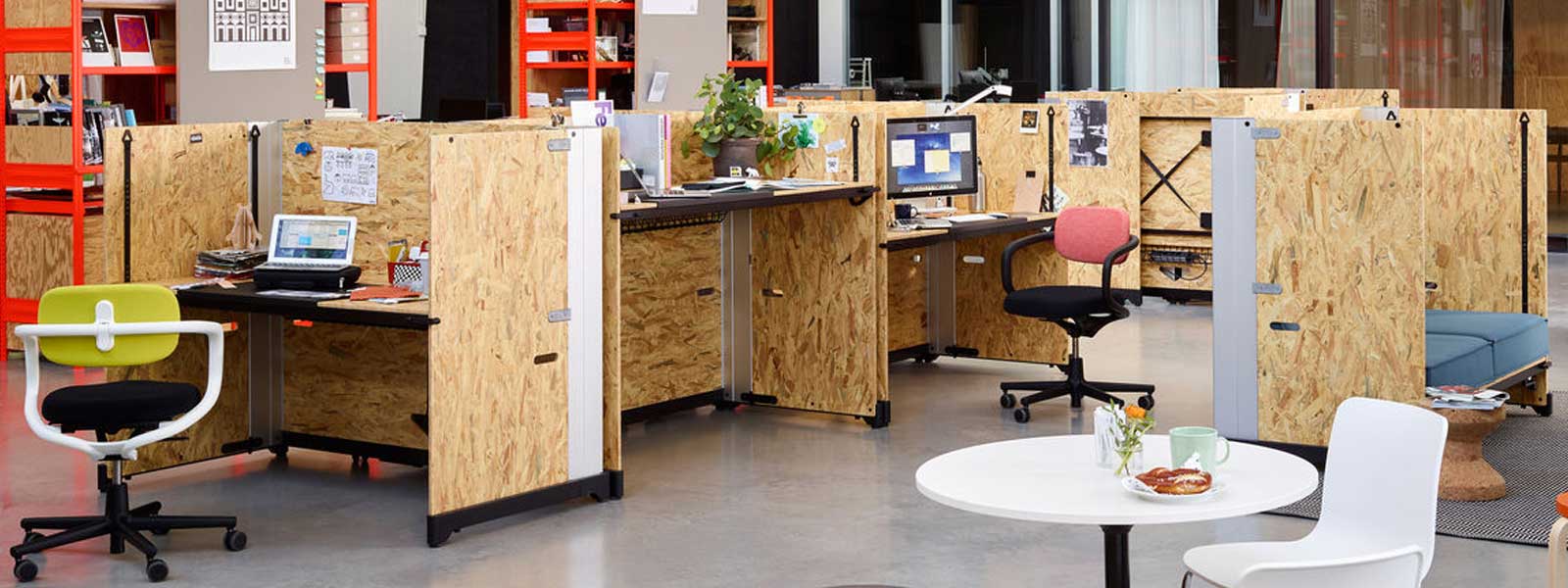
Why go for wheels?
Furniture on castor wheels is a forward-thinking solution to the fact that people now need to get more out of the working environment than ever before. Offices now need to work harder and offer more choice and control around posture and environment than we’ve ever seen.
Businesses are looking to get the most optimised use per sq. ft of space for their investment, to ensure that every inch of the workspace contributes positively and proactively to things like productivity, long-term comfort and strong communication between teams.
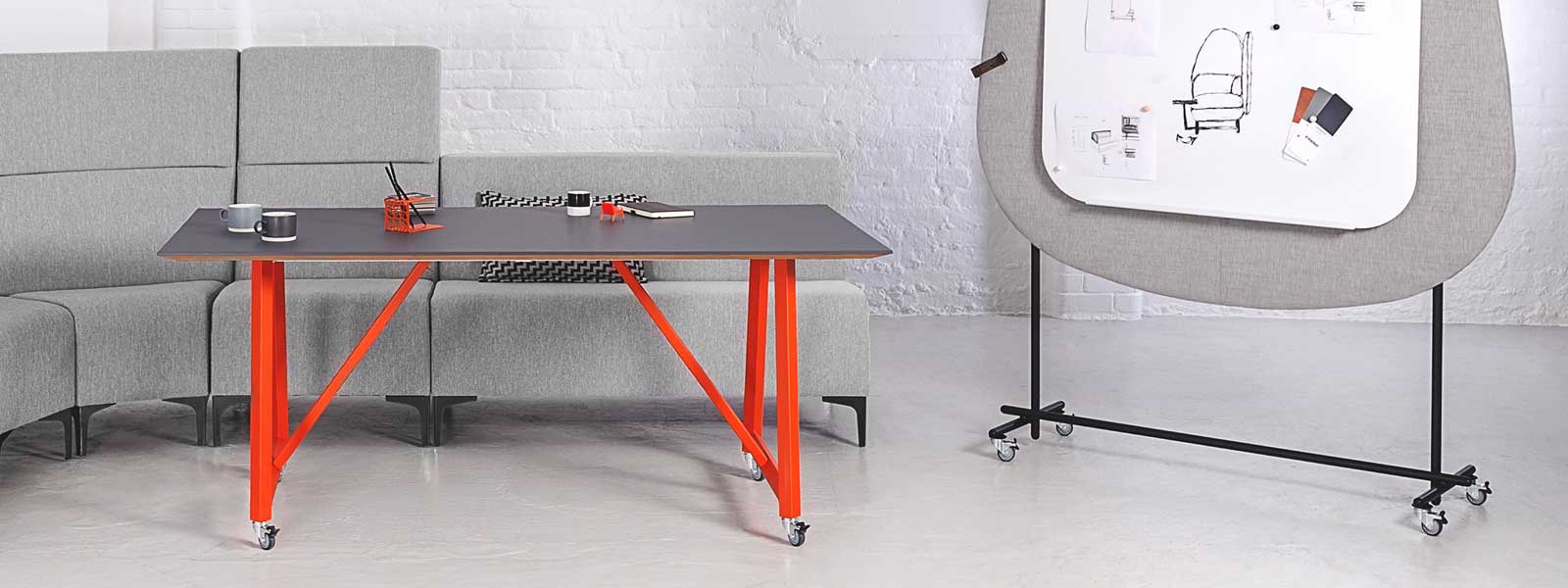
This has led to people needing more flexibility out of their environment and agile furniture solutions that allow them to control the physical space, manipulating it to their own benefit. No longer do employees want to be shown to a desk or an assigned workstation. They want to be able to pick and choose what suits their project or personality best – and if that setting doesn’t exist, they want to be able to use the resource and products around them to create it.
The benefits of mobility for the modern workforce
The most obvious benefit of furniture on castor wheels is the almost limitless flexibility this offers the user. As the exact opposite of fixed furniture solutions, wheel-mounted products can be very quickly and easily moved around the space according to task and requirement. The perfect way to create neighbourhoods and micro-environments that work for you.
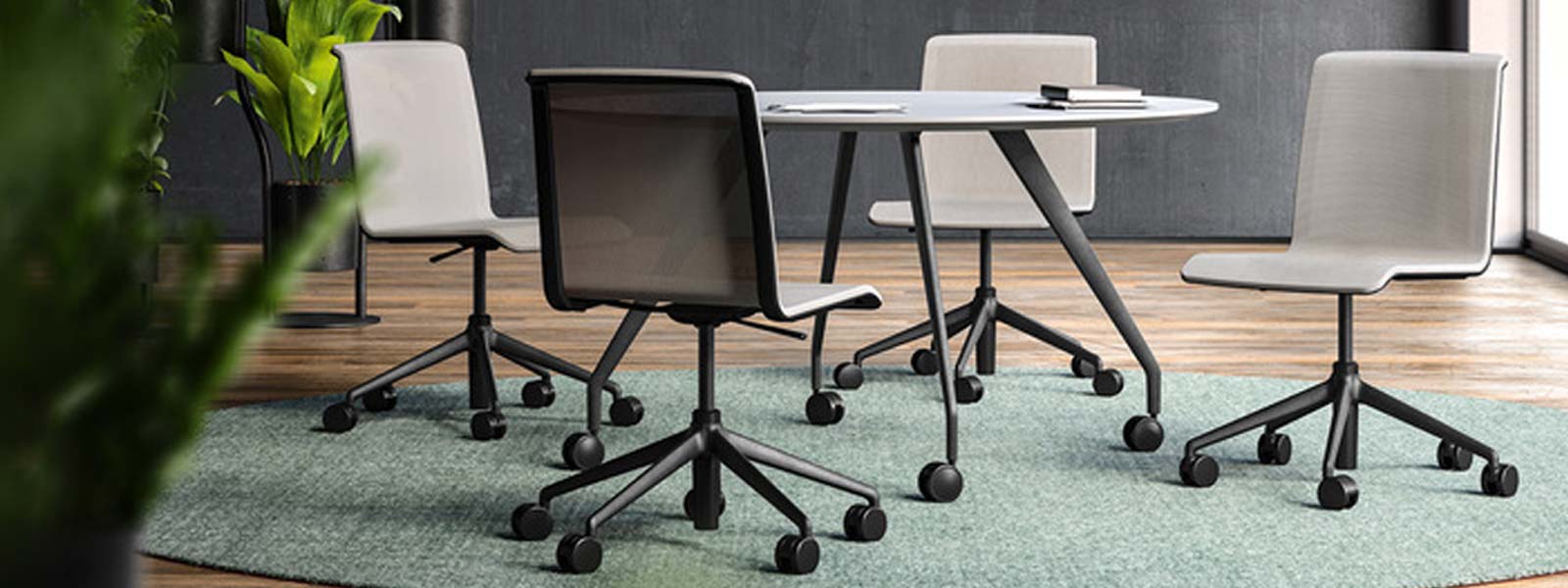
This means that the space becomes more multifunctional than ever before as it can be transformed into an entirely new zone by simply wheeling furniture into a different formation. For example in the morning, the furniture can be arranged to create a semi-shielded presentation space for a small group of people for a closed collaboration session, but in the afternoon, be seamlessly reconfigured to form an open-plan breakout space for communal use.
This approach to space design is particularly beneficial if you’re looking to create a physical environment which is more inclusive, flexible, reactive and appealing to today’s workforce. Or, if you’re downsizing your office and wanting a smaller space to work harder.
Keep reading about the benefits of reconfigurable office design and modular furniture
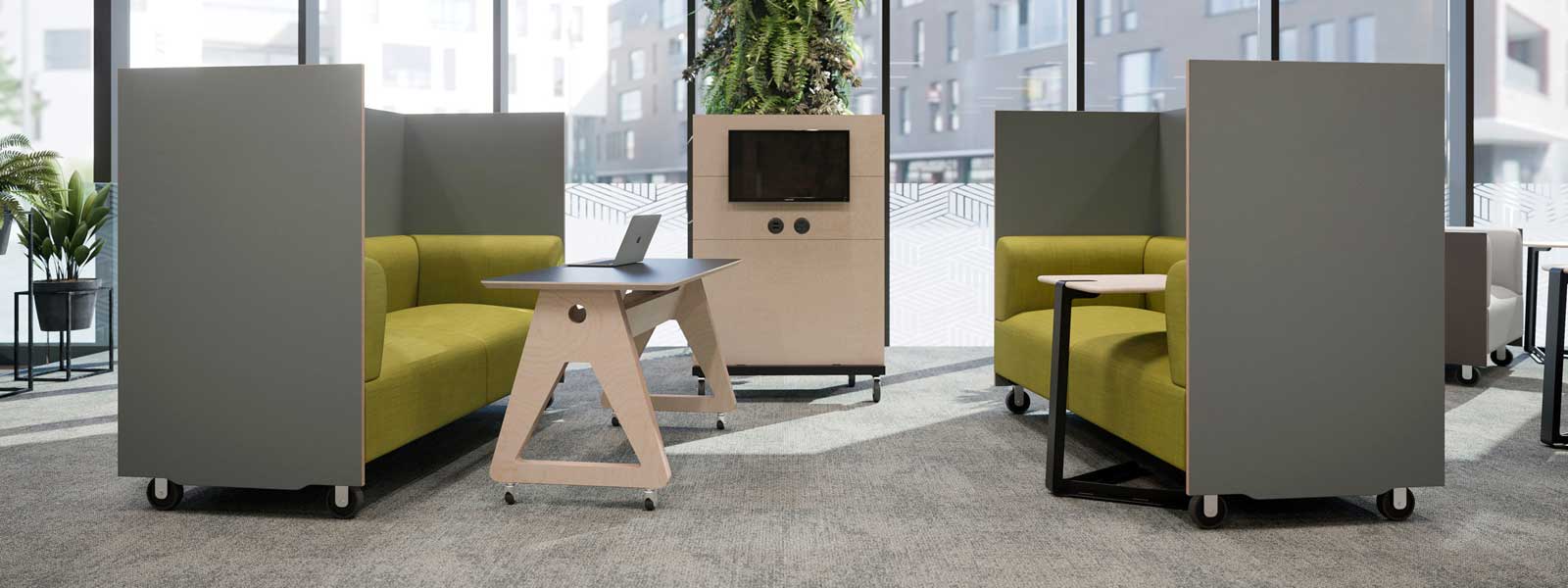
How to incorporate furniture on castors into your office design
Whilst wheel-mounted furniture offers a great deal of benefits, it’s important to realise that it won’t be a solution that suits all spaces or company cultures. An office with a high-footfall waiting area, for example, wouldn’t benefit from furniture on castors in their reception space as it could become quickly cluttered or unsafe if visitors are constantly moving tables, chairs or storage around.
In areas which you believe would benefit from this level of mobility, here’s how you can incorporate this solution into your space:
- Task chairs with castor wheels – a classic and timeless seating solution with obvious benefits.
- Desks or coffee tables on castors – perfect for breakout spaces, social spaces or event spaces which need to be adaptable.
- Screens to mount digital screens or whiteboards on, or to provide design-led space division.
- Wheel-mounted planters (like the ones pictured below) to zone an open plan space without permanent fixtures.
- Storage on wheels which can be easily moved around the space depending on where it is needed.
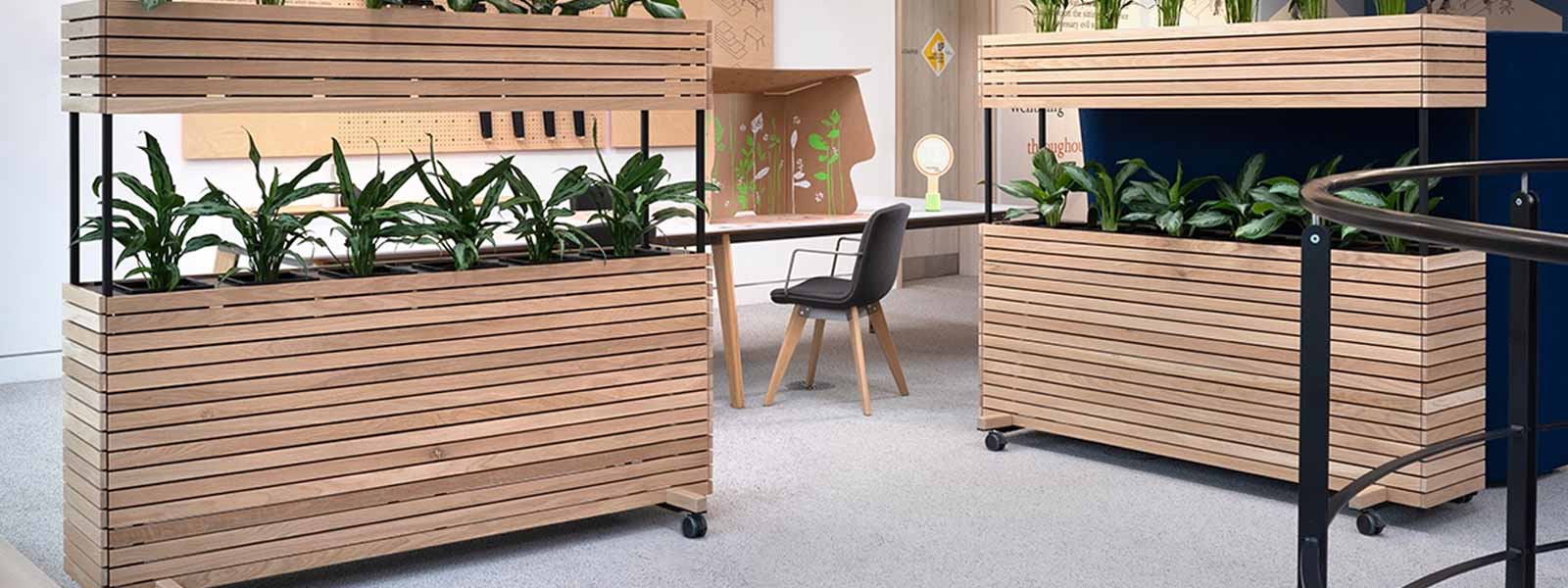
What have we learned about furniture on wheels?
We’ve learnt that it’s not for everybody and it won’t work in every workplace or setting. That said, the addition of desks, screens and storage on castors – to compliment the classic task chair – can prove advantageous for many people in many different ways.
It’s down to you, your business and how your staff best work as to whether or not you adopt this solution. However if you do decide to go for it, our experts recommend starting small and subtle, expanding your portfolio of furniture on castors as and when you feel you might require it.
Have your say…
Have some thoughts on the matter that you’d like to share? Join us on Instagram, Twitter or LinkedIn and let us know what you think. Are you feeling the benefits of furniture on castors in your working environment? Or do you think it’s all just a wheely (sorry!) bad idea?
